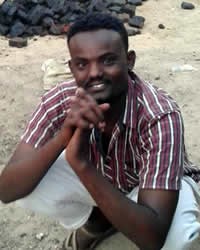Gimma, Jam'a in Sudan

Photo Source:
Abashar Kheder - Wikimedia
Creative Commons
|
Send Joshua Project a map of this people group.
|
| People Name: | Gimma, Jam'a |
| Country: | Sudan |
| 10/40 Window: | Yes |
| Population: | 199,000 |
| World Population: | 199,000 |
| Primary Language: | Arabic, Sudanese |
| Primary Religion: | Islam |
| Christian Adherents: | 0.10 % |
| Evangelicals: | 0.00 % |
| Scripture: | New Testament |
| Ministry Resources: | Yes |
| Jesus Film: | Yes |
| Audio Recordings: | Yes |
| People Cluster: | Arab, Sudan |
| Affinity Bloc: | Arab World |
| Progress Level: |
|
Introduction / History
The Gimmas are one of the many tribes in Sudan that speak Sudanese Arabic.
What Are Their Lives Like?
We know very little about the Gimma (or Jam'a). Most likely, they are a rural people who must live near a source of water to survive in a dry land. Most peoples of Sudan are trying to make a living from farming, though only a small percentage of the land is arable. Sorghum and millet are grains that grow well in dry parts of Africa like the Gimma homeland.
What Are Their Beliefs?
The Gimma are entirely Muslim.
What Are Their Needs?
They probably view Christians as their enemies. It will not be easy for them to accept the centrality of Christ given that their teachers tell them that the Bible cannot be trusted.
Prayer Points
Pray that God would strengthen, embolden and protect the few Gimma believers.
Very few are Christian of any kind. Ask the Lord to save key leaders among the Gimma who would proclaim the gospel to their own people.
Ask God to raise up prayer teams who will begin breaking up the soil through worship and intercession.
Pray that strong local churches would be raised up among the Gimma.